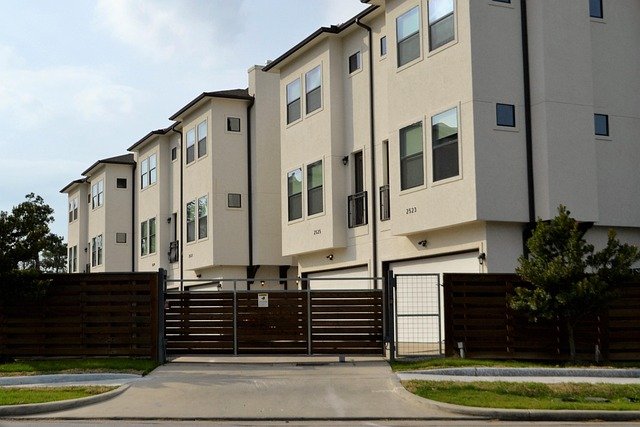Trends in Renting Real Estate in 2025
The rental real estate landscape is undergoing significant transformation as we move into 2025. With changing economic conditions, technological advancements, and shifting tenant priorities, both landlords and renters need to adapt to new market realities. Understanding these emerging trends is crucial for anyone looking to make informed decisions in the rental market. From remote work influences to smart home integration, the way people approach renting properties is evolving rapidly, creating both challenges and opportunities for all parties involved.

Why rushing to rent properties in 2025 often leads to regrets
The rental market in 2025 is characterized by high competition in desirable areas, creating pressure on prospective tenants to make quick decisions. Many renters report signing leases hastily only to discover issues later that could have been avoided with proper due diligence. Common regrets include overlooking poor insulation leading to high energy costs, failing to test mobile connectivity throughout the property, and not investigating noise levels during different times of day.
Another frequent misstep is neglecting to thoroughly review lease terms. In 2025’s rental landscape, contracts have become increasingly complex, with new clauses addressing remote work requirements, shared amenity access, and sustainability compliance. Tenants who don’t carefully examine these details often find themselves bound by unexpected restrictions or additional fees.
Before committing to a rental property, prospective tenants should conduct thorough research on the neighborhood’s development plans, transportation changes, and potential environmental concerns. Local council websites, community forums, and property market reports can provide valuable insights that prevent future disappointments.
How lifestyle changes and new technology are reshaping rental decisions
The continued normalization of hybrid work arrangements has fundamentally changed what tenants prioritize in rental properties. Dedicated home office spaces with reliable high-speed internet have transitioned from being desirable features to absolute necessities. Properties with flexible layouts that can accommodate both work and personal life are commanding premium prices, while those lacking adaptable spaces are experiencing longer vacancy periods.
Smart home technology has become a significant differentiator in the rental market. Properties equipped with integrated systems for climate control, security, and energy management are particularly appealing to tech-savvy renters. Landlords who invest in these technologies often find they can command higher rents while attracting longer-term tenants. Popular features include keyless entry systems, smart thermostats, and voice-activated home assistants that can be customized to tenant preferences.
Health and wellness considerations have gained prominence in rental decisions. Properties with improved ventilation systems, air quality monitoring, and access to outdoor spaces are seeing increased demand. This shift reflects broader societal concerns about wellbeing, with renters willing to pay premium rates for features that support physical and mental health. Many new developments are incorporating dedicated wellness spaces, such as meditation rooms or fitness areas, as standard amenities.
Key 2025 rental trends helping tenants avoid hidden pitfalls
Environmental sustainability has moved beyond being a preference to become a significant factor in rental decisions. Energy Performance Certificate (EPC) ratings now directly impact rental values, with properties achieving high efficiency standards commanding premium prices. Tenants are increasingly aware of how energy efficiency affects their utility costs, leading them to scrutinize insulation quality, heating systems, and window efficiency before signing leases.
Rental property technology platforms have evolved to offer unprecedented transparency. Advanced virtual tours now include sensor data on noise levels, air quality, and natural light patterns throughout the day. Some platforms offer “neighborhood simulation” experiences that allow potential renters to virtually experience commute times, local amenities, and community vibes before committing to a property.
Community-focused living arrangements are gaining popularity in the 2025 rental market. Properties that offer shared workspaces, community gardens, and social gathering areas are particularly attractive to younger renters looking to combat isolation. This trend has led to the rise of co-living developments that balance private living quarters with thoughtfully designed common spaces, fostering connection while maintaining personal boundaries.
The financial reality of renting in 2025
The cost of renting continues to evolve with market conditions across different regions. Urban centers are experiencing diverse pricing trends based on local economic factors, while suburban and rural areas have seen increased demand due to remote work flexibility. Understanding the current pricing landscape is essential for making informed rental decisions.
| Region Type | Average Monthly Rent (1-bedroom) | Average Monthly Rent (2-bedroom) | Year-on-Year Change |
|---|---|---|---|
| Major Urban Centers | £1,500 - £2,200 | £1,950 - £2,800 | +3.5% |
| Secondary Cities | £850 - £1,200 | £1,100 - £1,650 | +4.2% |
| Suburban Areas | £700 - £950 | £900 - £1,300 | +5.1% |
| Rural Communities | £600 - £800 | £750 - £1,100 | +2.8% |
Prices, rates, or cost estimates mentioned in this article are based on the latest available information but may change over time. Independent research is advised before making financial decisions.
Additional costs beyond base rent have become increasingly significant in 2025. Many properties now include separate charges for amenity access, smart home technology packages, and sustainability premiums. Savvy renters are negotiating these additional costs during the leasing process and requesting transparent breakdowns of all fees before signing agreements.
Navigating the evolving rental application process
The rental application process has been transformed by artificial intelligence and automated screening systems. Most property management companies now use digital platforms that evaluate potential tenants based on comprehensive criteria beyond traditional credit scores. Renters can improve their chances by maintaining positive digital rental profiles across multiple platforms and understanding how different factors are weighted in automated assessments.
Rental flexibility has emerged as a key negotiation point in 2025 leases. Fixed long-term contracts are being supplemented by options for shorter commitments with transparent extension terms. Some property managers offer “lifestyle leases” with built-in flexibility for tenants whose work or personal circumstances might change. Understanding these options and identifying which properties offer flexible terms can significantly improve the rental experience in an uncertain economic climate.
The rental market in 2025 presents both challenges and opportunities. By understanding current trends, conducting thorough research, and approaching the rental process strategically, tenants can find properties that truly meet their needs while avoiding common pitfalls. The most successful renters are those who take time to understand market conditions, leverage available technology tools, and carefully evaluate properties against their long-term lifestyle requirements.




